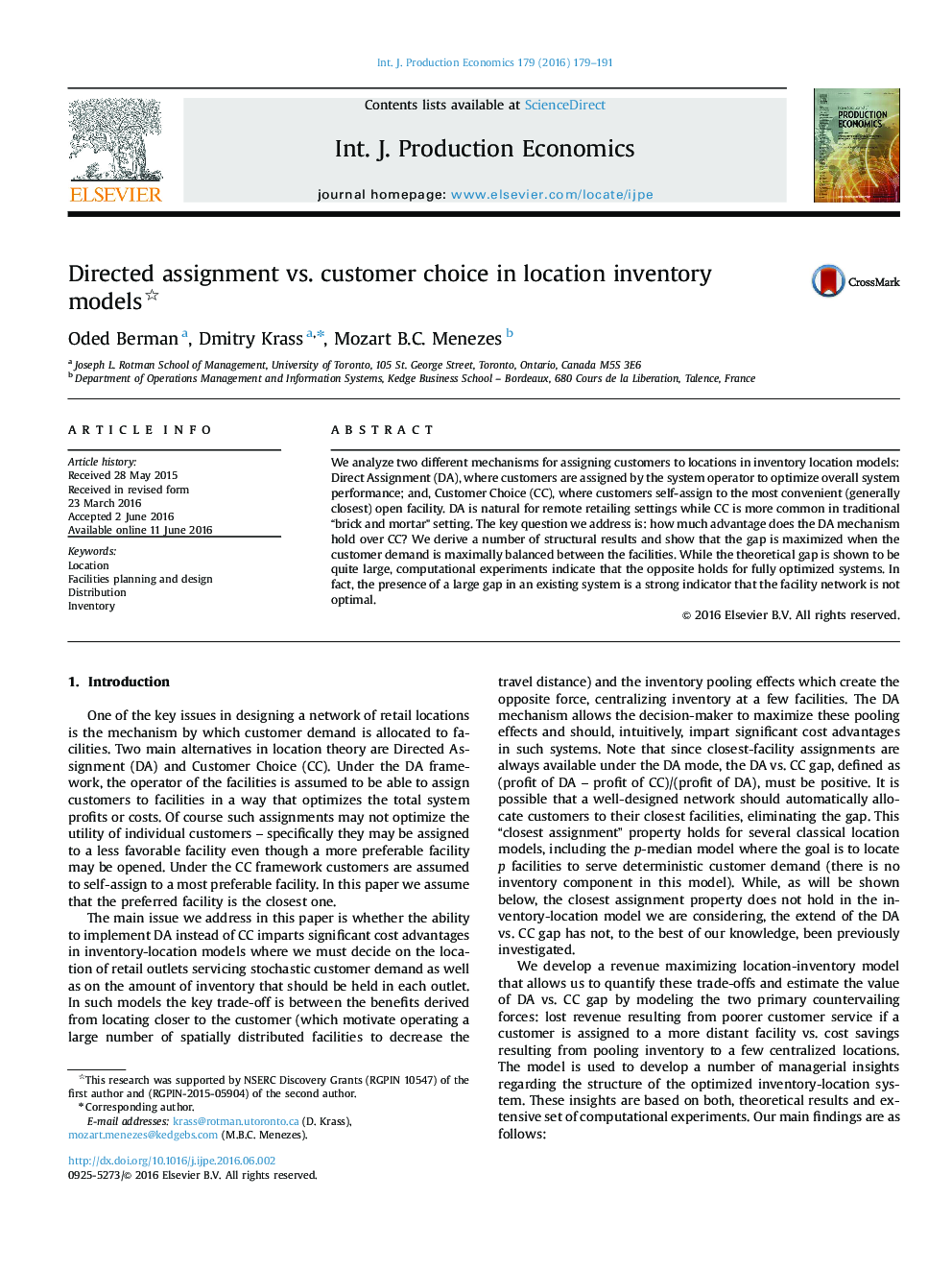| Article ID | Journal | Published Year | Pages | File Type |
|---|---|---|---|---|
| 5079264 | International Journal of Production Economics | 2016 | 13 Pages |
Abstract
We analyze two different mechanisms for assigning customers to locations in inventory location models: Direct Assignment (DA), where customers are assigned by the system operator to optimize overall system performance; and, Customer Choice (CC), where customers self-assign to the most convenient (generally closest) open facility. DA is natural for remote retailing settings while CC is more common in traditional “brick and mortar” setting. The key question we address is: how much advantage does the DA mechanism hold over CC? We derive a number of structural results and show that the gap is maximized when the customer demand is maximally balanced between the facilities. While the theoretical gap is shown to be quite large, computational experiments indicate that the opposite holds for fully optimized systems. In fact, the presence of a large gap in an existing system is a strong indicator that the facility network is not optimal.
Related Topics
Physical Sciences and Engineering
Engineering
Industrial and Manufacturing Engineering
Authors
Oded Berman, Dmitry Krass, Mozart B.C. Menezes,
